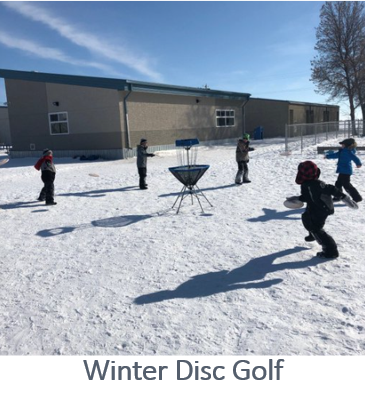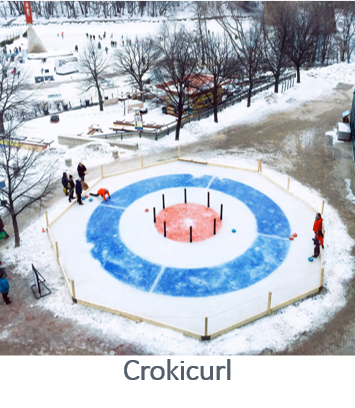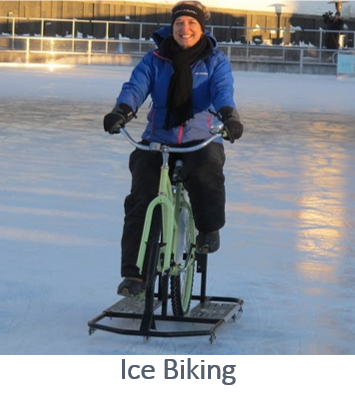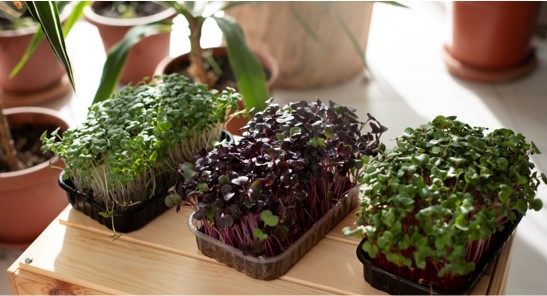
As the days grow shorter, and the chill of winter settles in, it’s easy to succumb to the urge to hibernate and wish for the return of warmer days. However, every season brings its unique gifts, including the winter months. Instead of dreading the cold and darkness, it’s time to shift our perspective and start a journey of winter wellness.
Welcome to our Winter Wellness Campaign, where we invite you to discover the beauty, magic, and opportunities that the winter season holds. Join us as we explore ways to make the most of this time of year, nurture your well-being, and find joy in the winter wonderland. Each week, we’ll focus on a theme and share ideas and activities to help transform winter into a season of health, coziness, and self-care. So, bundle up, grab a cup of hot cocoa, and join us for this winter wellness adventure!

During the winter months, one’s mindset plays a pivotal role in shaping the experience of this often-chilly season. It’s easy to succumb to a sense of dread as the days grow shorter, and the cold sets in. However, adopting the right mindset and perspective can transform these months into a time of enjoyment and opportunity. Instead of fixating on the darkness and cold, one can focus on the cozy moments, the chance for introspection, and the beauty of snow-covered landscapes. Embracing winter with an open heart can lead to a newfound appreciation for the season’s unique charm, from the warmth of a crackling fireplace to the joy of outdoor activities like skiing or ice skating. By adjusting our outlook, we can relish the magic of winter, building resilience and making the most of the season’s offerings, rather than merely enduring it.
Hygge (pronounced “hoo-ga”) is a Danish concept that doesn’t have an exact English equivalent, but it’s often described as a feeling of coziness, comfort, and well-being. It’s a lifestyle and mindset that the Danes have embraced for generations, and it’s become increasingly popular in other parts of the world as people seek ways to create a more balanced and contented life. Here’s a more detailed exploration of the concept of hygge:

Coziness: At its core, hygge is about creating a warm, comfortable, and inviting atmosphere in your home. This can be achieved through soft lighting, comfortable furnishings, and warm textiles like blankets and cushions. The goal is to create a space that feels like a cozy retreat, where you can relax and unwind.
Simplicity: Hygge is all about embracing simplicity and minimalism. It’s about decluttering your life, both physically and mentally, and focusing on the things that truly matter. By simplifying your surroundings and daily routines, you can reduce stress and create a more harmonious and balanced life.
Connection and Togetherness: Hygge places a strong emphasis on spending quality time with loved ones. Whether it’s gathering with friends and family for a meal, playing board games, or simply enjoying a conversation, hygge encourages meaningful connections with others. It’s about nurturing relationships and creating a sense of belonging and community.
Mindfulness: Being present and fully engaged in the moment is a key aspect of hygge. Whether you’re savoring a cup of tea, enjoying a cozy evening by the fire, or going for a walk in nature, hygge encourages mindfulness and appreciation for the little things in life. It’s about finding joy in the ordinary.
Comfort Food: Hygge embraces the pleasure of enjoying comfort foods and drinks, especially during the colder months. This includes warm soups, stews, baked goods, hot beverages like tea and hot chocolate, and the act of sharing these meals with others. The focus is on the experience and the taste rather than the calorie count.
Nature and the Outdoors: Despite its emphasis on indoor coziness, hygge also values spending time outdoors. Enjoying nature, whether it’s a walk in the woods or a day at the beach, is seen as a way to reconnect with the natural world and find peace.
Candles and Soft Lighting: Candles are a central element of hygge. Their soft, warm glow creates a serene atmosphere that fosters relaxation and comfort. Even in well-lit rooms, Danes often use candles to enhance the hygge ambiance.
Self-Care and Well-Being: Taking care of yourself is an important part of hygge. This includes practices like self-reflection, relaxation, and self-compassion. Hygge encourages you to treat yourself with kindness and prioritize your well-being.
In essence, hygge is about creating a sense of contentment and well-being in your everyday life, regardless of the circumstances. It’s not dependent on extravagant spending or grand gestures but instead on appreciating the simple, everyday moments that bring joy and comfort. It’s a philosophy that can be applied to various aspects of life, from home decor to social interactions, and it encourages a slower, more mindful way of living.
Maintaining regular sleep habits during the winter months is essential for promoting a healthy wintertime mindset. While it may be tempting to sleep more, stay up late, or let the darker days disrupt your sleep schedule, doing so can have significant consequences for your overall physical and mental well-being. Let’s review how regular sleep patterns support hormone regulation, mood stabilization, and immune health during the winter season.

Hormone Regulation
- Melatonin: Winter brings shorter days and longer nights, which can disrupt our natural circadian rhythm. Exposure to natural light during the day and keeping a consistent sleep schedule helps regulate the production of melatonin, the hormone responsible for promoting sleep. Maintaining a regular sleep pattern ensures that your body releases melatonin at the right times, making it easier to fall asleep and wake up at appropriate hours.
- Cortisol: Disrupted sleep patterns can also lead to irregular cortisol levels. High cortisol levels, often associated with chronic stress and sleep deprivation, can contribute to mood swings, anxiety, and even depression. By maintaining regular sleep habits, you can help keep cortisol levels in check and reduce the risk of these negative effects on your mental health.
Mood Stabilization
- Seasonal Affective Disorder (SAD): Many people experience Seasonal Affective Disorder during the winter months, characterized by symptoms of depression, fatigue, and increased irritability. Regular sleep patterns can help mitigate the symptoms of SAD by stabilizing your circadian rhythm and ensuring that your body is exposed to natural light during the day. This, in turn, helps regulate mood and energy levels.
- Sleep Quality: Sleep is essential for emotional regulation. When you maintain a consistent sleep schedule, your body can move through the various sleep cycles, including the restorative deep sleep stages. This promotes better sleep quality, which is crucial for mood stability and overall emotional well-being.
Immune Health
- Sleep and Immunity: Adequate, quality sleep is a cornerstone of a robust immune system. During sleep, your body repairs and rejuvenates itself, and your immune system becomes more active. Disrupted sleep patterns, such as staying up late or experiencing irregular sleep, can compromise your immune function, making you more susceptible to illnesses during the cold winter months.
- Inflammation: Chronic sleep deprivation and irregular sleep patterns have been linked to increased inflammation in the body. Inflammation can weaken the immune system and increase the risk of various health issues. Regular sleep helps to keep inflammation in check, supporting a healthier immune response.
Maintaining regular sleep habits during the winter months is crucial for your physical and mental health. It helps regulate key hormones like melatonin and cortisol, stabilizes mood, and supports a robust immune system. By prioritizing a consistent sleep schedule, you can better navigate the challenges of the winter season and maintain a positive and healthy mindset.
The 5 Senses Tea Steeping Ritual for Mindfulness is a calming and immersive practice that engages all your senses to help you become more present and mindful while enjoying a hot beverage, making it a wonderful activity for the winter season. This ritual can be applied to any hot beverage, not just tea.
 Here’s how it works:
Here’s how it works:
Select Your Beverage: Start by choosing your preferred hot beverage. It could be tea, coffee, hot chocolate, or any other warm drink you enjoy. The warmth of the drink makes it especially comforting during the winter months.
Set the Scene: Find a quiet and cozy space where you can enjoy your beverage without distractions. Dim the lights, light a candle, or create a warm ambiance that suits your preferences. This helps set the mood for a mindful experience.
Engage Your Five Senses:
- Sight: Observe the beverage in your cup. Notice the color, clarity, and any patterns or movement within the liquid. Take in the visual details and let your gaze linger on the cup.
- Smell: Gently inhale the aroma of your beverage. Take your time to savor the scent, and try to identify different notes or undertones. This can be especially soothing as warm, fragrant drinks are associated with comfort and relaxation.
- Touch: Hold the cup in your hands and feel its warmth. Pay attention to the sensation of the cup against your skin. As you lift the cup, notice its weight and the texture of the surface.
- Taste: Take small sips and let the beverage linger on your tongue. Pay attention to the various flavors and textures as they unfold. Notice how the taste evolves as the beverage cools or as it mixes with your saliva.
- Hearing: Listen to the sound of your beverage as you sip or stir. The gentle bubbling, the clinking of the spoon against the cup, or the soft swirl of the liquid can all be grounding sounds.
Mindful Sipping: Take slow, deliberate sips, and pay close attention to each sip. Focus on the sensations in your mouth and throat as you swallow. Let go of any distractions and be fully present in the moment.
Gratitude: Take a moment to express gratitude for the simple pleasure of this warm beverage. Reflect on the fact that it’s warming you from the inside, providing comfort, and offering a moment of peace.
Reflection: After you’ve finished your drink, sit quietly for a few moments. Reflect on how the experience made you feel. Did it bring you a sense of calm and presence? Were you able to put aside worries and enjoy the moment fully?
In winter, this ritual is particularly effective as it not only provides warmth and comfort but also allows you to embrace the coziness and stillness that often comes with the season. It’s an ideal way to combat the chill and dark days with a soothing, mindful practice that can be done alone or shared with loved ones. It’s a way to create a sanctuary of mindfulness in your own home and find joy in the simple pleasures, making it a perfect winter activity to nourish your mind and soul.
The winter season often brings cold and gloomy days that can challenge our mental and emotional well-being. However, one powerful tool for maintaining a positive mindset during these months is listening to inspiring and uplifting podcasts. These podcasts offer a wealth of motivational stories, personal growth insights, and heartwarming narratives that can boost your mood, provide motivation, and create a sense of connection and support. They not only counteract the seasonal blues but also equip you with the mindset and resilience to thrive even in the chilliest of months.

Here are some suggested podcasts to explore for a dose of winter positivity:
The Moth features real people sharing personal, inspiring stories that often revolve around overcoming challenges, making it an excellent source of motivation and connection.
The Daily Meditation Podcast provides daily mindfulness and meditation sessions to help you manage stress, improve your mood, and stay centered during the winter season.
Happy Place explores various aspects of happiness, mental health, well-being, and the human experience. The host engages in conversations with a diverse range of guests to discuss their personal journeys, challenges, and strategies for leading a happier and more fulfilling life.
The Happiness Lab is hosted by Dr. Laurie Santos, a professor of psychology and cognitive science at Yale University. The podcast explores the science of happiness and well-being, aiming to uncover the strategies and insights that can lead to a more fulfilling and joyful life.
Tiny Leaps, Big Changes focuses on personal development, self-improvement, and making positive changes in one’s life. The central theme of the podcast is the idea that small, incremental steps or “tiny leaps” can lead to significant and transformative “big changes” in your life.
Engaging in a gratitude meditation during the winter months holds immense value, as it helps cultivate a positive mindset that can uplift your spirits in the face of seasonal challenges. By focusing on the things you’re thankful for, this practice encourages a sense of warmth and contentment, counteracting the gloomy and often melancholic winter atmosphere. It serves as a powerful tool for enhancing your mental and emotional well-being, enabling you to approach the winter season with a more optimistic and resilient frame of mind, ultimately making the colder months more enjoyable and fulfilling.
Try the following guided meditation with Denise, one of EWSNetwork’s professional health coaches.
Recognizing our impressionability can transform our winter perspective. We choose what external influences affect us, shaping a positive view of winter, cultivating supportive social circles, improving media literacy, and embracing well-being practices. This shift lets us see winter as a time for growth and self-care, emphasizing subjective experience over external conditions.
 Selective Impressionability: We are bombarded with messages about the winter season – some positive, some negative. Media portrays winter as a time of coziness and holidays, but it also highlights the challenges of cold, dark days. Recognizing that we can choose which narratives to embrace can help us filter out negative influences and focus on the positive aspects of winter.
Selective Impressionability: We are bombarded with messages about the winter season – some positive, some negative. Media portrays winter as a time of coziness and holidays, but it also highlights the challenges of cold, dark days. Recognizing that we can choose which narratives to embrace can help us filter out negative influences and focus on the positive aspects of winter.
Mindset and Interpretation: Our mindset and interpretation play a significant role in how we experience any season, including winter. If we approach winter with dread and a belief that it’s inherently detrimental to our well-being, our experience will likely match this expectation. Conversely, if we embrace winter as a time for introspection, rest, and a slower pace of life, we can find opportunities for personal growth and self-care.
Community and Social Influence: Understanding our impressionability also means acknowledging that the people around us can shape our perceptions of winter. If we surround ourselves with individuals who loathe winter and constantly complain about it, our own negative feelings may be amplified. Conversely, if we engage with a community that appreciates and celebrates the season, our experience of winter can become more positive.
Media Literacy: The media we consume has a powerful impact on our views of the world, including how we perceive winter. Recognizing this influence can motivate us to be more media literate and discerning about the content we expose ourselves to. We can seek out sources that promote positive aspects of winter, or even use media as a tool for inspiration and education about how to make the most of the season.
Embracing Well-being Practices: To change our perspective on winter, it’s vital to recognize the role of well-being practices. Instead of seeing winter as a time of stagnation and depression, we can view it as an opportunity to focus on self-care, healthy habits, and mental health. Engaging in activities like meditation, exercise, or creative pursuits can help us make the most of the season.
January and February can feel like the bleakest winter months, in part because they’re defined by lack: there’s none of the cheer and pomp of the holidays, which make even the coldest December festive, and there are still months to go before spring.
 This is the perfect time to focus on finding your spark, something that captivates you, that brings you joy and can carry you through to Spring.
This is the perfect time to focus on finding your spark, something that captivates you, that brings you joy and can carry you through to Spring.
Maybe it’s a project, learning a new skill, a book series, trying out recipes, or exploring our beautiful island.
Choose something you’ve always wanted to do and make the time and space to focus on it throughout the season.
Create winter traditions instead of waiting for established traditions and festivities. This could involve setting aside a special evening each week for cozy movie nights with loved ones, organizing winter-themed game nights, or even crafting your own holiday celebrations. Designing your unique winter rituals can infuse the season with a sense of warmth and belonging.
Use the winter months to explore the natural beauty around you. Plan nature hikes, winter picnics, or simply stroll through snowy landscapes. Connecting with nature during this season can provide a profound sense of serenity and wonder.
Consider dedicating some of your time to volunteering or helping those in need. Acts of kindness can not only bring joy but also give you a profound sense of fulfillment.
Incorporating these elements into your winter season can help you find your spark, instilling a sense of purpose and happiness even during the coldest and darkest days. By embracing your own unique winter traditions and personal pursuits, you can make these months a time of warmth, growth, and connection, carrying you through to the arrival of spring with a brighter spirit.

Staying physically active during the winter is essential for overall well-being. As the temperatures drop and the days get shorter, it’s easy to slip into a sedentary routine, but maintaining an active lifestyle is crucial for both physical and mental health. By preparing for the cold weather and finding ways to enjoy activities both indoors and outdoors, you can make the most of the winter season. Engaging in winter sports like skiing or ice skating can provide an exhilarating outdoor workout, while indoor activities such as yoga or swimming can help you stay active in a cozy environment. Regular physical activity in the winter not only helps keep you in shape but also boosts your mood, combats seasonal affective disorder, and strengthens your immune system. So, don’t let the cold weather keep you from staying active and embracing all that winter has to offer for your wellness.
The colder temperatures of winter can often make us want to stay indoors, but it’s important to remember that this season presents a unique opportunity to enjoy the outdoors and the benefits that come with it. In this list, we’ll explore why cold-weather workouts are an excellent way to make the most of winter’s brisk climate.

Improved Endurance: When you exercise in cold weather, your body doesn’t need to work as hard to regulate its temperature. This means your heart doesn’t have to pump as much blood, allowing you to exercise more efficiently and potentially improve your endurance.
Decreased Sweating: Cold weather reduces the amount you sweat compared to warm weather workouts. Less sweating can help you stay hydrated, prevent electrolyte imbalances, and minimize the risk of overheating.
Sunlight Exposure: Winter workouts can provide valuable exposure to natural sunlight. This exposure is essential for the body’s production of vitamin D, which is linked to mood regulation and can help combat seasonal affective disorder (SAD), a form of depression that often occurs during the winter months.
Variety and Motivation: Cold weather workouts can introduce variety to your exercise routine. Activities like ice skating, skiing, or winter hiking can be enjoyable and engaging, motivating you to stay active during the winter season.
Boosted Immune System: While exercising in extreme cold isn’t advisable, moderate cold exposure can stimulate the immune system. This may contribute to better immune function, helping to protect against winter illnesses.
Mental Resilience: Cold weather workouts can also build mental resilience. Overcoming the discomfort of chilly temperatures can enhance your mental toughness and discipline.
It’s important to note that cold-weather workouts may not be suitable for everyone, especially those with certain medical conditions or medications. Always consult with a healthcare professional before starting a new exercise regimen, particularly in cold weather, to ensure your safety and well-being. Proper clothing and precautions are also essential to protect against cold-related risks such as frostbite and hypothermia.
Winter offers a wide range of activities that may not be as well-known as traditional winter sports like skiing or ice skating. Have you heard of snowtagging? Kicksledding? How about crokicurl? These activities provide a fresh and exciting way to enjoy the winter months and explore the beauty of the season beyond the more common winter pastimes. Learn more about these fun outdoor activities here.












Winter is a magical season, and there’s no better way to embrace its charm than by taking an outdoor winter walk. The crisp air, pristine snow-covered landscapes, and the tranquility of nature can create a unique and refreshing experience. To make the most of your winter walk, it’s important to be prepared and fully immerse yourself in the beauty of the season. In this guide, we’ll provide you with tips to ensure a safe and enjoyable winter walk, allowing you to appreciate the serene winter wonderland to the fullest. So, bundle up, step outside, and let’s explore how to make the most of your outdoor winter adventure.

Here are some tips to help you fully enjoy your winter stroll:
Dress appropriately: Wear layers to stay warm, and make sure your outer layer is windproof and waterproof. Don’t forget a hat, gloves, a scarf, and warm, insulated boots.
Choose the right time: Plan your walk during daylight hours when it’s safest and enjoy the natural light. Try to avoid very early mornings and late evenings when it can be colder and darker.
Stay safe: Be mindful of slippery surfaces, especially if there’s ice or snow. Equip yourself with appropriate footwear, like non-slip soles or crampons, to prevent accidents.
Plan your route: Explore a nearby park, nature reserve, or scenic area. Choose a route that offers beautiful winter landscapes, like snowy forests or frozen lakes. You can even try walking down a street you have never walked down before.
Pack essentials: Carry a small backpack with essentials such as water, a thermos with a warm beverage, energy-boosting snacks, and a first-aid kit.
Capture the moment: Bring a camera or smartphone to take photos of the beautiful winter scenery and capture your memories.
Embrace silence: Take the time to enjoy the peacefulness of the winter landscape. Listen to the sound of snow crunching beneath your boots and the hush of the winter air.
Make it a mindful walk: Avoid listening to music, instead focus on your surroundings using all your senses: thinking about what you can see, hear, feel and smell. It’s a great way to de-stress and stay in the moment.
Birdwatch: Winter can be a great time for birdwatching. Bring binoculars and a field guide to identify local birds. Many species are more visible against the snowy backdrop.
Bring a pet: If you have a well-prepared and winter-ready pet, consider taking your dog for a winter walk. Just make sure they’re adequately protected from the cold and have proper gear like booties.
Learn something new: Take the opportunity to learn about winter wildlife, trees, or local history. You can do some research beforehand or bring a guidebook.
Admire the sunset: If you time your walk right, you might catch a beautiful winter sunset. Plan your walk to end at a scenic spot to watch the sun go down.
Remember that safety should always be a top priority during winter walks, so check the weather forecast and let someone know your plans and expected return time. Enjoy the unique beauty of the winter season while staying warm and safe.
Adapting warm-weather activities to the cold weather can be a fun way to enjoy the winter months and embrace the change in seasons. Here are some activities typically associated with warm weather that you can try in the cold weather:

Outdoor Yoga or Tai Chi: Practice yoga or tai chi in the crisp winter air. Dress warmly and consider using a yoga mat or blanket to insulate yourself from the cold ground.
Outdoor Boot Camp: Take your boot camp workouts outdoors and utilize the winter landscape for challenging exercises like sled pushes, snowshoe sprints, and snowbank jumps.
Outdoor Circuit Training: Create an outdoor circuit with exercises like jumping jacks, push-ups, squats, and planks. Use the snow or icy terrain for added resistance.
Beach Volleyball: Play beach volleyball on a snow-covered beach or in an indoor sand volleyball facility. The soft sand provides a forgiving surface to dive on.
Outdoor Cycling: Invest in a fat-tire bike designed for winter riding, or simply put winter tires on your regular bike and explore snowy trails or your neighborhood.
Stand-Up Paddleboarding (SUP): Some areas offer winter paddleboarding on partially frozen lakes. Just be sure to dress warmly and use appropriate safety gear.
Outdoor Basketball: Find an outdoor basketball court with snow removed and organize a game with friends or family.
Rollerblading or Roller Skating: Indoor roller rinks are an option, but you can also try ice-skating rinks or rollerblading on paved paths cleared of snow.
Outdoor Tennis: Many communities have outdoor tennis courts that can be cleared of snow, allowing you to enjoy a game or practice your skills.
Beach Walks: Take a winter beach walk, but swap your flip-flops for warm boots and your swimsuit for layers of clothing. It’s peaceful and beautiful in a different way during the colder months.
Kayaking or Canoeing: Some areas offer cold-weather kayaking or canoeing on partially frozen lakes and rivers. Ensure you have the right equipment, including a dry suit.
When adapting warm-weather activities for winter, always prioritize safety and dress appropriately for the colder conditions. These variations allow you to continue enjoying your favourite activities – or try something new! – while making the most of the winter season.
Staying motivated to work out during the cold winter months can be challenging, but it’s essential for maintaining your physical and mental well-being. Here are some tips to help you stay motivated when it feels too cold to exercise:

Find a Workout Partner or Group: Teaming up with a workout partner or joining a fitness group can boost your motivation. Knowing someone is waiting for you makes it harder to skip workouts during the chilly season.
Prep a Warm Wake-Up: Program your thermostat to create a cozy atmosphere in the morning. Waking up to a warm room makes it easier to leave the comfort of your bed for your winter exercise routine.
Set an Energizing Morning Alarm: Replace the standard alarm sound with an upbeat, motivating song. A lively tune can kickstart your day and get your heart pumping for your workout.
Prep Your Gear the Night Before: Lay out your workout clothes, shoes, and equipment the night before to streamline your morning routine. No fumbling in the cold for your gear.
Shorter Workout Sessions: If long workouts are daunting, break them into shorter, manageable sessions. Ten minutes in the morning and a brief session later can be just as effective.
Create a Comfortable Home Workout Space: Designate a specific area in your home for exercise. This space can be a corner of a room or an entire room if you have the space. Having a dedicated workout space at home means you won’t have to brave the cold to get to the gym. Make your workout space entertaining and comfortable, so you’ll look forward to exercising at home, even when it’s cold outside.
Winter workouts can be a refreshing and invigorating experience, but they come with their own set of challenges. To ensure a safe and effective cold-weather exercise routine, here’s an elaboration on each of these tips:

Dress ‘Dry,’ Not Just ‘Warm’: Staying warm is essential, but it’s equally important to stay dry. In winter, your body can lose heat quickly when you’re wet. That means, skip activewear made of cotton, which soaks up sweat and rain and holds in moisture. Moisture-wicking base layers made of synthetic fibers like polyester, nylon, and polypropylene are designed to dry quickly and move sweat away from your skin. Layering with moisture-wicking and insulating materials, like fleece or down, helps you regulate your body temperature while keeping you dry.
Opt for Bright Colours: Choosing bright and reflective clothing is not just a matter of style; it’s about safety. With shorter daylight hours in winter, visibility becomes a concern, especially if you’re running or cycling. Wearing bright colours and reflective elements on your clothing or accessories increases your visibility to drivers and other athletes.
Check Your Traction: Winter conditions can be slippery due to snow and ice. To prevent accidents, make sure your footwear offers good traction. Consider investing in shoes or boots designed for winter sports or attach ice cleats for extra grip. This will help you avoid slipping and falling during your workout. It’s important to stay off the pavement if you’re wearing spikes. They’re designed to pierce snow or ice, so on paved surfaces, they can impede balance instead.
Do a Longer Warm-Up: In colder weather, your muscles and joints may be stiffer and less pliable. To prevent injuries, spend extra time warming up your body. Dynamic stretches, light cardio, and mobility exercises can help increase blood flow and prepare your muscles for more intense activity.
Breathe Right: Breathing in cold, dry air can be harsh on your respiratory system. Breathing in through your nose can help warm and humidify air, but that’s not always feasible when exerting yourself and breathing heavily. To mitigate this, use a neck gaiter or face mask to warm the air before it enters your lungs. Breathing through your nose can also help humidify and warm the air before it reaches your lungs.
Remove Layers as You Heat Up: As your workout intensifies, your body temperature will rise. To avoid overheating and excessive sweating, layer your clothing so you can easily remove or unzip outer layers as needed. Staying comfortable is essential for maintaining a consistent and effective workout.
Cool Down and Then Change Out of Damp Gear: Once you stop moving after a cold-weather workout, you’ll get chilled fast. But that doesn’t mean you don’t need to cool down. it helps your body eliminate exercise by-products and reduce potential muscle soreness. It also helps your heart because going straight from strenuous exercise to standing around creates stress for your heart. Gradually taper your exercise intensity during the final 5 to 10 minutes. Then, once breathing and heart rate normalize, repeat your warm-up and do some static stretching. Then it’s time to get out of your damp workout clothes, which can suck away warmth. A warm shower and dry, clean clothes will keep that chill away.
Winter workouts can be enjoyable and beneficial if you prepare properly. Dressing for the conditions, ensuring visibility, and adapting your warm-up and cool-down routines are key to a safe and successful cold-weather exercise regimen. By following these tips, you can make the most of your winter workouts while minimizing the risk of injuries and discomfort.
Winter is a season of unique beauty, with its glistening snowscapes and crisp, invigorating air. It offers a wonderful opportunity to enjoy the great outdoors through activities like skiing, snowshoeing, and ice skating. However, there are days when the biting cold makes it challenging to venture outside. On such occasions, the winter wonderland can still be appreciated from the warmth and comfort of your indoor spaces. It’s crucial to stay active even when the outdoors seem less inviting. Fortunately, there are numerous ways to keep moving indoors, from home workouts and dance sessions to yoga, and even creative alternatives like mall walking or indoor sports. By embracing these indoor activities, you can maintain your fitness, boost your mood, and stay in motion while waiting for a warmer day to reacquaint yourself with the winter’s enchanting beauty.

Here are a few ideas to consider:
Find a team. Joining an indoor sports team ensures you have a warm, comfortable environment to exercise in, making it easier to stay active.
Hit the pool. It’s always summer at an indoor pool. Swimming provides excellent aerobic fitness and a full-body workout. It also helps keep shoulder and knee joints flexible.
Try yoga. Yoga can be a valuable opportunity to restore muscle balance. For those seeking warmth and relaxation, hot yoga provides a steamy sanctuary from the winter chill.
Trampoline Parks: Many areas have indoor trampoline parks that offer a playful and high-energy way to stay active while having a lot of fun.
Indoor Cycling: If you enjoy biking, try out an indoor cycling class. It’s an excellent cardiovascular workout that can help you burn calories and stay warm.
View Previous Content: Week 1

Embracing winter and savoring the coldest months of the year is all about thoughtful preparation and planning. Instead of dreading the darkness and cold, let’s change our perspective by crafting a well-thought-out strategy to make this season truly special. Start by assessing your winter goals and aspirations. What activities do you want to experience? How can you infuse warmth and coziness into your daily routine? Create a detailed schedule that includes both indoor and outdoor activities, ensuring a balance of relaxation and adventure. Stock up on winter essentials like cozy blankets, hot cocoa, and your favorite books. Consider learning new winter skills, like cooking hearty soups or mastering the art of snowman building. By meticulously planning ahead, you’ll not only have exciting things to look forward to but also a sense of purpose and excitement as you navigate the winter months, making this season one to cherish rather than endure.
As you prepare to embrace the winter season, it’s a perfect time to set meaningful goals that will add purpose and excitement to these colder months. Take some time to reflect on what you’d like to achieve during this season. Whether it’s mastering a new skill, nurturing your creativity, or dedicating time to personal growth, defining your winter goals will set the stage for a fulfilling season. Here are some resources to consider to offer guidance, inspiration, and support to help you reach your goals:
Set SMART Goals: SMART stands for Specific, Measurable, Achievable, Relevant, and Time-bound. This framework helps you create clear and well-defined goals. You can use this approach alongside any goal-setting method or tool to ensure your objectives are well-structured. Read more information here.
Goal-Setting Apps: Streamline your goal-setting process by using apps such as Todoist, Trello, or Habitica. These tools can help you structure your objectives, create action plans, and monitor your progress.
Journaling and Reflection Guides: Keeping a journal or using reflection guides like “The Artist’s Way” by Julia Cameron can help you better articulate your goals and track your personal growth.
Coaching and Mentoring: Consider working with a coach or mentor who specializes in areas relevant to your goals. They can provide personalized guidance and support to help you succeed.
Mind Mapping Tools: Tools like MindMeister or XMind can help you visualize your goals and break them down into smaller, actionable steps. Mind maps can provide a clear overview of your goals and how they relate to each other.
Creating a winter activity calendar or bucket list is a fantastic way to shift your perspective on the colder months and make the most out of the season. Instead of dreading the cold and darkness, you can look forward to exciting activities and experiences that are unique to winter. Here are some tips and ideas to get you started:
Brainstorm a list of activities: Make a list of winter-appropriate ideas of things you can enjoy. These can include outdoor and indoor activities such as:

- Ice skating
- Skiing or snowboarding
- Building a snowman
- Winter hiking
- Visiting a holiday market
- Trying new winter recipes
- Movie or game nights
- Hot chocolate tasting
- Reading by the fireplace
Discover Winter Wonders in Your Community: Explore event listings and community calendars to find winter festivals, workshops, and gatherings that align with your goals and interests during the season.
Write it Down: Make a monthly or weekly calendar for the entire winter season. You can use physical calendars, digital tools, or apps to do this, but spend time documenting it so you have something to refer to and remind yourself of what you have to look forward to.
Invite Others: Winter activities are often more enjoyable when shared with friends and family. Encourage loved ones to join you in completing your winter bucket list.
Discovering new winter-themed skills can bring excitement and a deeper connection to the season. It allows you to engage with winter activities and surroundings in a more meaningful way, fostering a sense of accomplishment and creating lasting memories while appreciating winter’s unique beauty and charm. Ultimately, this approach can turn winter into a season of growth and enjoyment. Here are some practical tips and additional ideas to enrich your winter skill-building:
Diverse Learning Options: Explore different avenues to acquire new skills, from local classes and workshops to online tutorials. Consider joining groups or communities that share your interests to make the learning experience more social and enjoyable. Websites like Coursera, Udemy, and Skillshare offer a wide range of courses, including those related to winter skills, creativity, and personal development.
Consistent Practice: Dedicate regular time to practice and refine your new skill. Consistency is key to improvement and boosting your confidence in the skill you’re developing.
Integration with Winter Activities: Once you’ve gained proficiency, integrate your new skill into other winter adventures. For instance, if you’ve learned to ice skate, make it a regular part of your winter outings to fully embrace the season.
Explore a Variety of Skills: Don’t limit yourself to just one winter skill. Experiment with different activities like snowshoeing, cross-country skiing, winter photography, or even learning to play a musical instrument suited for indoor gatherings.
Share the Experience: Invite friends or family to join you in acquiring new winter skills. Learning together can enhance the sense of camaraderie and shared accomplishment.
Document Your Journey: Keep a journal or digital portfolio to track your progress and capture memorable moments along your skill-building journey. Reflecting on your growth can be motivating and fulfilling.
Getting enough sunlight exposure during the colder and darker winter months is crucial for maintaining your well-being because it helps regulate your circadian rhythm, boosts mood, and supports overall health. Here are some ways to prepare and plan to ensure you get enough sunlight during winter:

Morning Routine: Start your day by spending some time outside in the morning sunlight. Even a short walk or sitting on your porch with a cup of coffee can help kickstart your body’s natural wakefulness and energy.
Prioritize Daylight Hours: Structure your daily schedule to maximize exposure to natural light during daylight hours. For example, if you work from home, position your workspace near a window or take short breaks to step outside.
Lunchtime Walks: Use your lunch break as an opportunity to get outside. Take a brisk walk, run errands, or eat your lunch in a nearby park to soak up some sunlight.
Use Light Therapy: Light therapy, or phototherapy, involves sitting near a lightbox that emits bright, full-spectrum light that mimics natural sunlight. This can be particularly helpful for individuals with Seasonal Affective Disorder (SAD) or those living in regions with limited sunlight.
Open Curtains and Blinds: Keep curtains and blinds open during the day to let in as much natural light as possible. This is especially important if you spend a lot of time indoors.
Natural Light at Home: Arrange your home to make the most of natural light. Consider using light-colored paint and reflective surfaces to maximize light reflection. Choose furniture placement that allows sunlight to penetrate deeper into your living space.
Sunrise and Sunset: Pay attention to the timing of sunrise and sunset in your area, and plan outdoor activities accordingly. If you can catch the first rays of sunlight in the morning or the warm hues of sunset, it can be very uplifting.
Travel and Vacation: If feasible, plan a winter getaway to a sunnier destination. A short vacation to a place with more sunlight can provide a mental and emotional boost.
Remember that the amount of sunlight you need can vary depending on factors such as your location, individual tolerance, and skin type. It’s essential to find a balance that works for you to ensure you’re getting enough sunlight exposure without overexposing yourself to harmful UV rays. If you have concerns about your winter sunlight exposure, consider discussing it with a healthcare provider or a dermatologist to develop a personalized plan that meets your needs and health goals.
Maximize your time indoors by decluttering and organizing your living space. This can be a highly beneficial activity for your well-being in several ways.

Improved Mental Health: A cluttered and disorganized environment can lead to feelings of stress, anxiety, and overwhelm. When you declutter and organize your space, you create a more visually pleasing and peaceful atmosphere. This can have a positive impact on your mental health, helping to reduce feelings of chaos and promote a sense of calm.
Enhanced Productivity and Focus: An organized space can help you stay focused and be more productive. When everything has its designated place and is easy to find, you waste less time searching for things and can concentrate better on your tasks and goals.
Reduced Distractions: Clutter can be distracting and make it challenging to concentrate on what matters most. Clearing out unnecessary items and creating a clutter-free environment can reduce distractions and improve your ability to stay on track with your priorities.
Physical Health Benefits: Decluttering often involves physical activity and movement, which can be especially beneficial during the winter when outdoor activities may be limited. Cleaning, lifting, and organizing can provide a low-impact form of exercise, helping you stay active.
Enhanced Sleep Quality: A tidy and organized bedroom can promote better sleep. When your sleeping space is clutter-free and serene, it becomes easier to relax and unwind, leading to improved sleep quality.
Sense of Accomplishment: Completing decluttering and organizing projects can provide a sense of accomplishment and boost your self-esteem. This can have a positive ripple effect on other areas of your life and motivate you to tackle additional tasks.
Increased Efficiency: An organized home or workspace can lead to increased efficiency in your daily routines. You’ll spend less time looking for things, cleaning up, or dealing with the consequences of disorganization.
Positive Psychological Impact: Studies have shown that decluttering and organizing can have a positive psychological impact by reducing feelings of guilt, shame, and embarrassment associated with a cluttered space. It can also enhance your overall sense of well-being and happiness.
Stress Reduction: Decluttering can be a mindful and meditative activity. As you sort through your belongings and make decisions about what to keep, donate, or discard, you may find it therapeutic and stress-reducing.
Preparation for Future Activities: Organizing your belongings during the winter can set the stage for a more organized and efficient year ahead. You’ll be better prepared for future activities, whether they involve work, hobbies, or personal goals.
To make the most of decluttering and organizing during the winter months, consider breaking down the process into smaller, manageable tasks. Set achievable goals for each day or weekend, focusing on specific areas or categories like your closet, kitchen, or home office. Additionally, consider donating items you no longer need to charitable organizations, which can contribute to a sense of purpose and goodwill.
A winter staycation provides a unique and meaningful way to savour the season, celebrate its special qualities, and find joy in the simple pleasures it offers. It allows you to make the most of winter’s distinctive charm without venturing far from the comfort of home, making it a truly enriching and memorable experience.

The best staycation is one that aligns with your interests and allows you to take a break from routine and responsibility, to relax and recharge. It’s an opportunity for quality time with family, friends, or yourself, while creating cherished memories. Here are some ideas to consider:
Winter Wonderland Picnic: Pack a basket with your favorite winter snacks, sandwiches, and hot drinks. Head to a nearby park or nature reserve with blankets and have a winter picnic. Don’t forget to build a snowman if the conditions are right!
Home Spa Retreat: Create a spa-like atmosphere in your own bathroom. Run a warm bath with Epsom salts and essential oils, pamper yourself with facials and body scrubs, and relax with calming music. It’s the perfect way to unwind and rejuvenate.
Arts and Crafts Retreat: Set up an art studio at home with supplies for painting, drawing, or crafting. Spend your staycation working on creative projects, whether it’s making holiday decorations or creating personalized gifts.
Local Exploration: Become a tourist in your own town or city. Visit museums, art galleries, historical sites, or local attractions that you’ve never explored before. Sometimes we forget about the hidden gems in our own backyard.
Build a Family Fort: Use blankets, pillows, and cushions to build a large fort in the living room. Spend the day inside the fort reading books, playing games, or watching movies together.
Movie or TV Series Marathon: Choose a movie or TV series you’ve been wanting to watch and have a binge-watching session. Make it extra cozy with popcorn, blankets, and your favorite beverages.
Prepare for and enjoy the winter season by dedicating time to nurturing an indoor garden. Cultivating and caring for your indoor green space can be an incredibly rewarding experience, offering you a delightful way to embrace the winter months while adding a touch of nature’s beauty to your home. Successful indoor gardening does require thoughtful planning and ongoing care to ensure you can fully enjoy the rewards, but plants offer a multitude of benefits that make it well worth the effort.

Improved Air Quality: Plants help purify the air by absorbing harmful pollutants and releasing oxygen during photosynthesis. They can remove toxins such as formaldehyde, benzene, and volatile organic compounds (VOCs) from indoor air, contributing to better air quality.
Enhanced Well-Being: Studies have shown that indoor plants can have a positive impact on mental health and well-being. Being surrounded by greenery can reduce stress, improve mood, and increase overall happiness. It promotes a sense of calm and relaxation.
Humidity Regulation: Indoor plants release moisture through a process called transpiration, which increases humidity levels in your home. Maintaining optimal indoor humidity can help alleviate dry skin, sore throats, and respiratory issues often associated with winter heating.
Better Focus and Productivity: Having indoor plants in your workspace or study area can enhance concentration and productivity. They can also reduce fatigue and improve attention span.
Noise Reduction: Some larger plants with dense foliage can act as natural sound barriers, helping to reduce noise levels in your home. This can be particularly useful in apartments or homes with noisy surroundings.
Biophilic Connection: Humans have an innate connection with nature, known as biophilia. Indoor plants bring a touch of the natural world into our indoor spaces, fostering a stronger connection to the environment and reducing feelings of isolation.
Health Benefits: Some studies suggest that indoor plants may have physical health benefits, such as faster recovery from illness or surgery and a reduction in symptoms of conditions like allergies and asthma. They can also help lower blood pressure and heart rate.
Learning and Education: Growing indoor plants can be a valuable educational experience, especially for children. It provides opportunities to learn about biology, botany, and the natural world.
Creativity and Hobby: Caring for indoor plants can be a creative and rewarding hobby. It encourages you to learn about different plant species, experiment with gardening techniques, and express your personal style through plant selection and arrangement.
Fresh Food: One of the most rewarding aspects of having an indoor winter garden is the ability to grow your own vegetables and herbs. This self-sufficiency allows you to harvest produce at its peak of freshness, ensuring that you enjoy the fullest flavours and highest nutritional value in your meals.
If you’re interested in giving an indoor herb or vegetable garden a try, here are some resources to check out:





